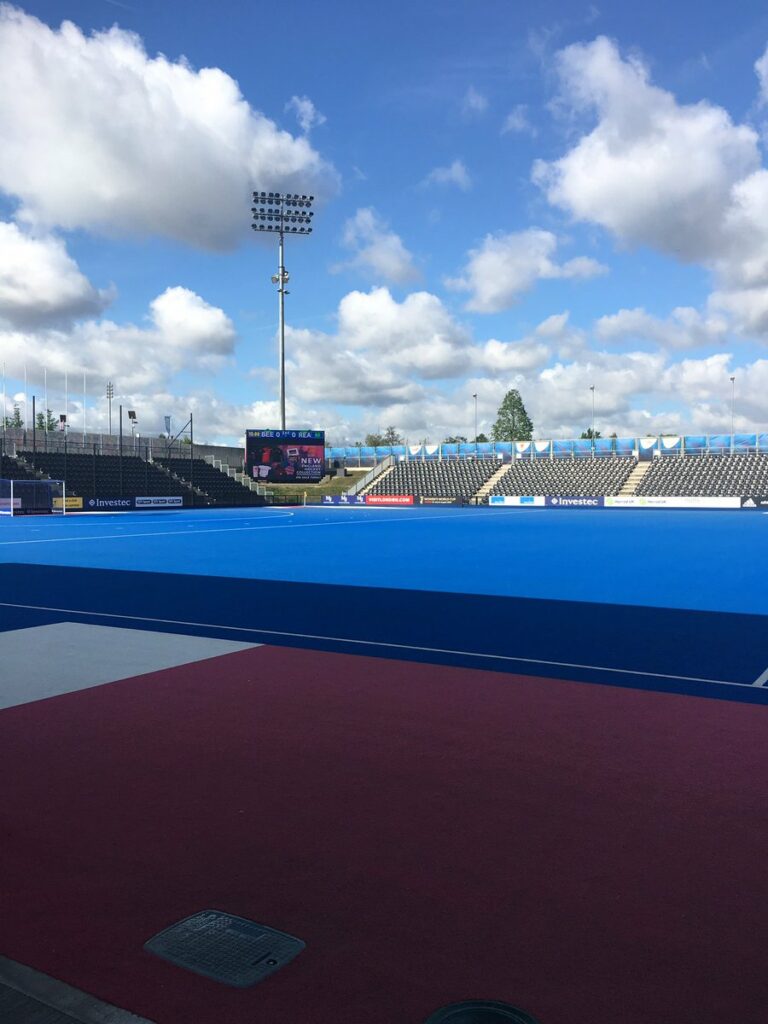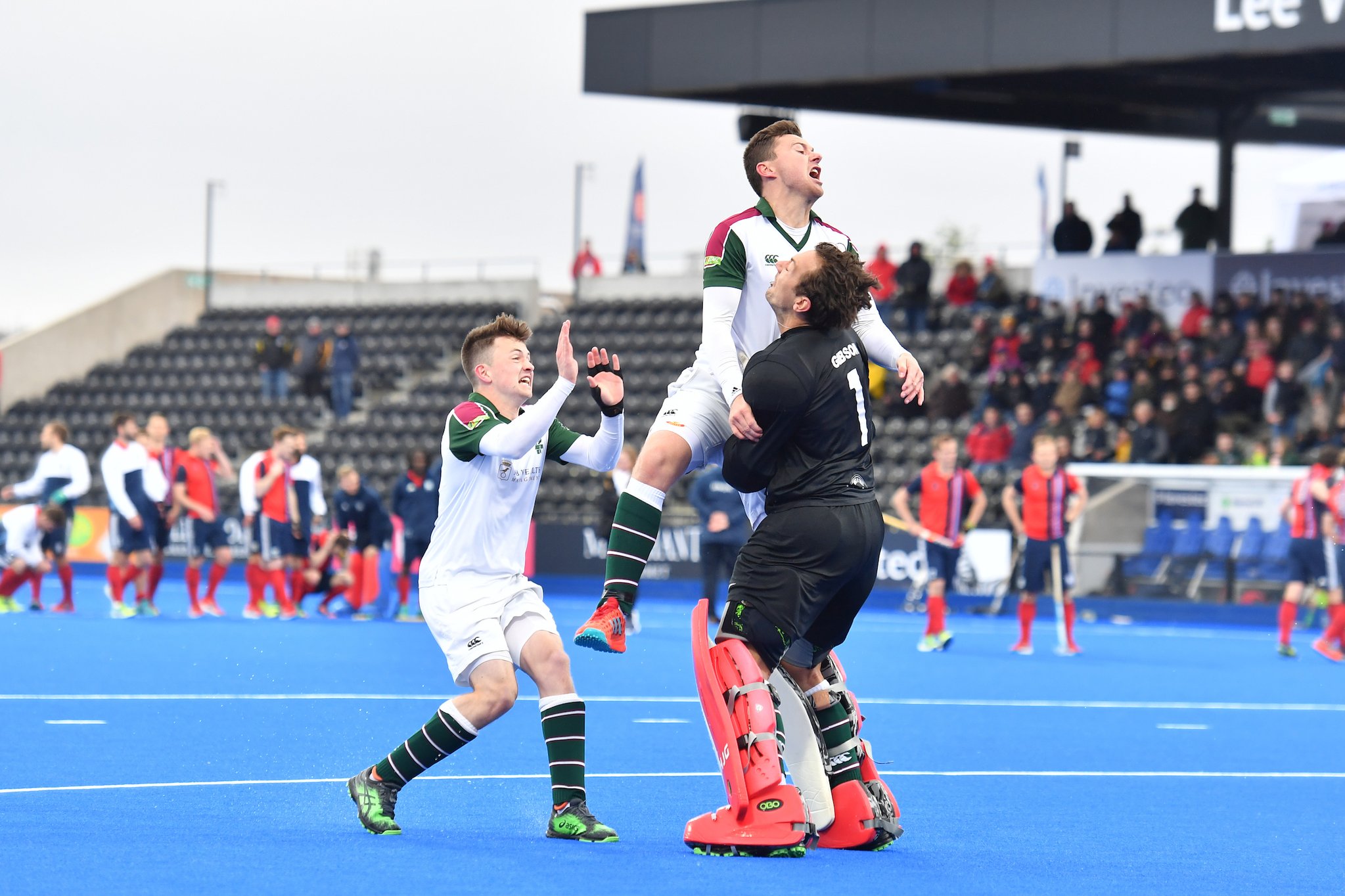Columnist Todd Williams reflects on the English season and urges hockey officials to look to Hoofdklasse success and bring League Finals back to the clubs fighting for their very existence in the sport
So, English hockey lovers, where were you on the last weekend in April?
Judging by social media, you were either well into your post-season life or one of the many who were still fully engaged in a seemingly endless number of training weekends, matches and events that have been going on since the league seasons finished. Certainly at my club, you’d barely know the season was over. If it’s not summer league, it’s regional junior competitions, while there was an invasion of the most competitive and apparently indestructible women’s over-50 and 55 players that I’ve ever seen.
For the overwhelming majority however, I know where you weren’t. Despite the top four men’s and women’s club teams in the country putting on six exciting matches over the two days at the Lee Valley Hockey and Tennis Centre , the awkward truth is that this showcase of the domestic game was played out in front of a crowd that stood no chance of even filling one stand’s worth of the 3000 seats at Lee Valley.
As good as the images and clips of the goals and shootouts were on social media, the ever-present backdrop of empty stands stood out like a sore thumb.
But before you think that I’m about to embark on a scathing critique of the appeal of the Premier Divisions or the enthusiasm of hockey spectators, I’m not. Those crowds at the Hockey and Tennis centre actually reflect what is great about our game. We just need to be honest and recognise it.
The strength of our game is largely based around two factors. First, most people in hockey participate in one form or another. People play, umpire, coach, administrate, watch their children and just plain help out. In short, there is a reason most people are pitch side at a game of hockey other than it being a game they like to watch.
Secondly, almost every participant spanning one or more of the various categories does so on a voluntary basis.
The reality is that unless it’s a major tournament like the Olympics, World Cup or Euros, people would rather play in their own team, or umpire in their own league or make sure the register at the junior training session is done properly. Anything other than attend the league play-offs.
The volunteer basis also creates a unique level of perfectly acceptable selfishness. It might surprise people to learn that even at Premier Division level, coaches have to factor in absence for ski trips, Six Nations matches and weddings as much as injuries and illness.
But it’s a hard job to argue with someone that has paid their club and match fees and travels for hours every second Sunday that the 40 or so minutes on the pitch this weekend will be better than the free tickets to England v Wales or the NFL match at Wembley. Instead, we usually just insist on having enough notice to be able to plan for someone’s week on the slopes, which is fair enough when that same person every other week is helping out with the juniors every Sunday morning or driving the club’s fund-raising efforts.
Football of course is a different story and that’s why I wonder why hockey’s top administrators appear to be putting the same sort of hopes and expectation on the hockey community as though they are the same as football “fans”. If there was an option between tickets to the hockey play-offs at Lee Valley and a big game at Wembley, I’d probably choose the latter and I expect most of the players in the team I coach would do the same.
That said, football’s “tribal” thing is at the very extreme and comes with a host of problems that hockey can happily do without. Nonetheless, while we’ll put on the replica shirts at the Olympics and World Cups, you have to go a long way to find the wonderfully obsessive sight of flares, face paint and crazy fan behaviour at a club hockey match.
Or do you?
Followers of the Dutch Hoofdklasse competitions will know of their annual play-off series where the top four teams in the men’s and women’s leagues play in a best of three, home and away format, with the higher ranked team getting the advantage of two home games if needed. This year, the men’s semi-finals and final all went the distance with some 4000 spectators at Kampong watching the home team in the first game trying and close out the series against Amsterdam.
Just as we’ve seen with the EHL, it’s these club-based series that really capture the imagination, and attendance, of the most enthusiastic club fans including the face-painters, the headband wearers, the Smurfs and those older and/or more refined ones in the wonderful blazers.
Sold out! Uitverkocht!
Bloemendaal – Amsterdam
Zowel online als aan de kassa zijn geen kaarten meer te krijgen!@AHBCAmsterdam @hockey_nl @HockeyStyle @KNHB_NL pic.twitter.com/dI2zm49oPN— HC Bloemendaal 🏑 (@hcbloemendaal) May 10, 2018
To support this case, you only have to look at the wonderful job Surbiton did to host the recent Eurohockey Club Championships. It was of course a shame that the team that has dominated the women’s Premier Division for half a decade wasn’t able to find their best form, but just as the likes of Reading, EG and Beeston have done before them, the effort of the committee, members and players to organise and run the event so successfully shows what clubs are capable of.
EHL rounds and Eurohockey events are of course a step up from domestic play-offs but if we are ever going to grow our fanbase, it surely has to start by allowing, or in some cases requiring, clubs to host these championship, promotion and relegation deciding matches. On the back of being brave enough to hold the EHCC, Surbiton now has new dugouts, a proper video tower, more sponsors and has put their club on show to their local community.
Compare that to a couple of weeks earlier when their supporters watched their men and women achieve an historic double, having travelled to a freezing cold and empty stadium, with no indoor space available for the elderly, no covered bar and stewards more worried about confiscating food and shepherding people around to try and make empty stands look less obvious.
No doubt though, this idea is much easier to write about than do. The legacy of the 2012 Olympics gave hockey (and tennis) the “home” that is Lee Valley and I’m sure it will host an excellent World Cup in July. Six years on from the London Games though and the novelty of playing on a blue pitch near to where the Olympics before the last one were played is surely losing its sheen.

Let’s not also forget that seven of the eight Premier Division teams that competed in this year’s play-offs were from clubs south of Milton Keynes. Granted, unless you’re Old Loughtonians, Lee Valley is a pain for any club to get to but let’s just be completely crazy and imagine that Bowdon and the University of Birmingham make the women’s semi-finals next year. What would be more appealing for Bowdon?
At least one home game and then a tolerable 80-mile drive to Birmingham or a 400-mile round trip, plus the cost of an overnight stay and a full English in a Westfield shopping centre? And what if Bowdon did so well as to finish on top of the ladder? Surely they should be able to play for the championship and a European place in front of as many spectators as can get to their club and not as many as can afford the time and money to get to Stratford?
In the words of the great philosopher George Santayana, “Those who can’t remember the past are condemned to repeat it” and the relentless travel of north and south leagues and post-season play-offs at a “central” venue seem worryingly similar to the 90’s which ultimately led to the demise of the England Hockey Association and the sale of the National Hockey Stadium to the Milton Keynes Dons.
Beyond that drama though is the more worrying story of what has happened to the top clubs of that era. Looking back to the final standing in the men’s First Division of 1995-96, it’s bad enough that only three of what was eighteen teams will play Premier Division next season. Worse still is the fact that so many of the top clubs of the Nineties have since had to battle for their very existence. Compare that to Holland where nine of the 12 teams in the 1995-96 Hoofdklasse season were in the league this year, including Kampong and Amsterdam.
Strong clubs playing big games at home. Maybe that’s why 4,000 people turned up?






